At today’s Hesai Technology Open Day, the debate between lidar and pure vision routes has once again unfolded.
“Is ‘first principles’ bionic?”
“Is ‘bionic’ necessarily scientific?”
Hesai CEO Yifan Li kicked off the event by focusing on this controversy, citing various sources and countering Musk from the perspective of first principles. His viewpoint is that bionics isn’t necessarily correct, and first principles aren’t necessarily bionic. “My understanding of first principles is to avoid blind imitation and not be misled by previous experiences.”
The loyalty of lidar manufacturers to lidar is matched by Musk’s disdain for it. Musk once claimed, “Only fools use lidar!”
Yifan Li, however, stated: “Including Musk, everyone should acknowledge that vehicles equipped with lidar are certainly safer.”
Verbal sparring cannot determine the fate of lidar; technological maturity and effectiveness are the decisive factors.
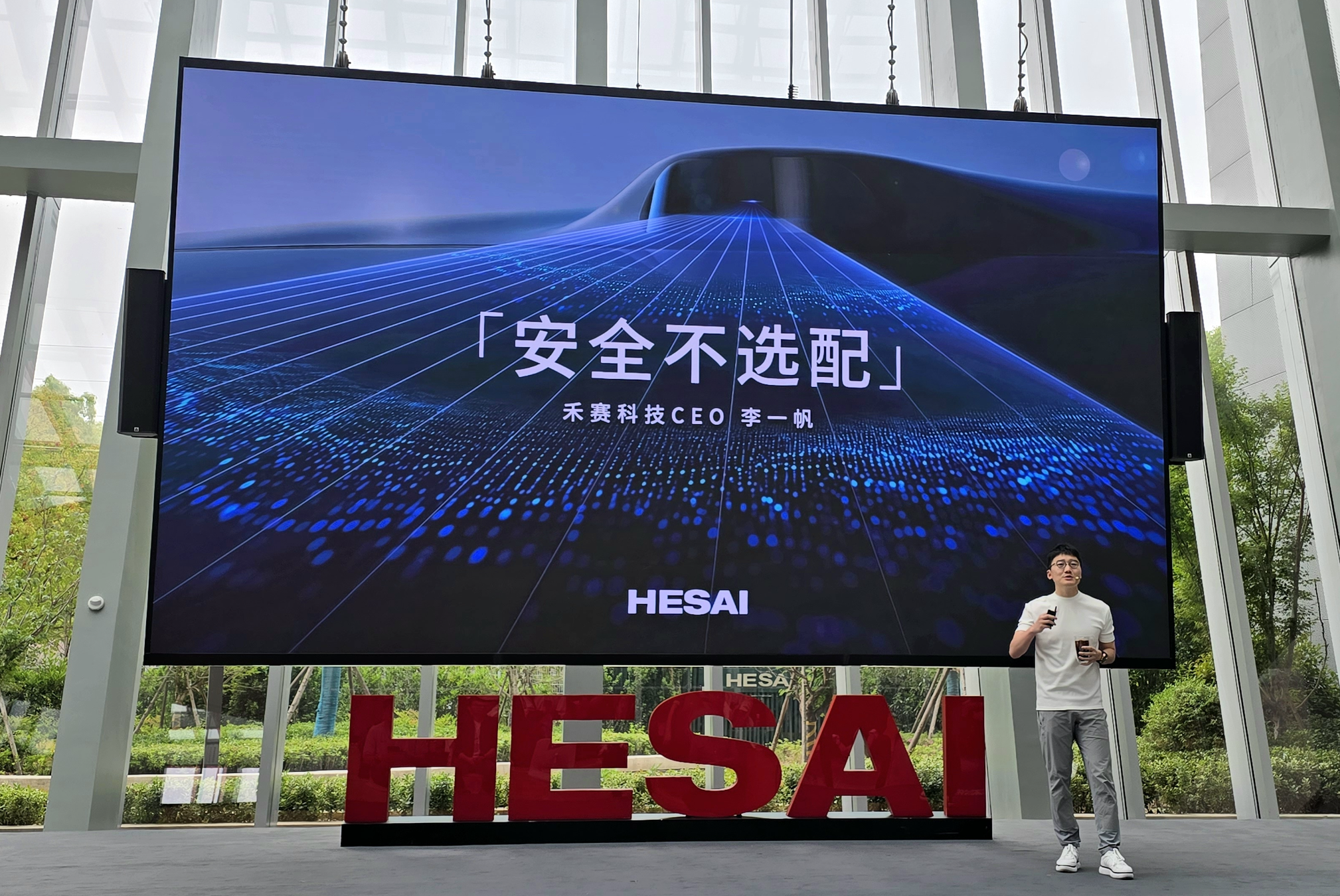
Today, Hesai unveiled its lidar sensing solution “Qianyiyan” for L2 to L4 and officially launched the new generation of automotive-grade lidar products: the ETX automotive-grade long-range lidar, the AT1440 automotive-grade ultra-high-definition lidar, and the FTX automotive-grade solid-state blind-spot lidar.
Amid the clamor of the route debate, Hesai, through a series of tangible new products, attempts to shift the controversy from “Should lidar be used?” to a practical choice of “Which type of lidar is best?”

Yifan Li remarked that the role of assisted driving has now transitioned from a functional button to a safety button, and with cost reductions, lidar has increasingly assumed the role of safety supervision.
Becoming the “Chinese Ping Pong Team” of the Automotive Industry
In March of this year, Hesai Technology announced its 2024 annual report, with an adjusted net profit of approximately 14 million RMB, successfully reversing the 241 million RMB loss in 2023.
This annual report declared to the world: Hesai has become the first and only lidar publicly traded company to achieve full-year profitability. This accomplishment was reached after a decade of efforts.
By 2024, Hesai has maintained the world’s leading market share in automotive lidar for four consecutive years, achieving the largest global market share in the vehicle-mounted lidar, ADAS lidar, and Robotaxi segments.
 ## What Key Actions Has Hesai Taken Over the Past Decade?
## What Key Actions Has Hesai Taken Over the Past Decade?
Yifan Li explained that aside from delivering high-quality, high-performance products, “we truly did one thing, which is to revolutionize ourselves. Through substantial R&D investment, extensive chip development, and building our own factories, we have significantly reduced LiDAR costs by 99.5%.”
In 2017, the unit price of LiDAR was over 200,000 RMB; this year, it has dropped to around $200. Currently, Hesai’s cumulative LiDAR deliveries have surpassed one million units. By 2025, Hesai expects to deliver 1.2 to 1.5 million units.
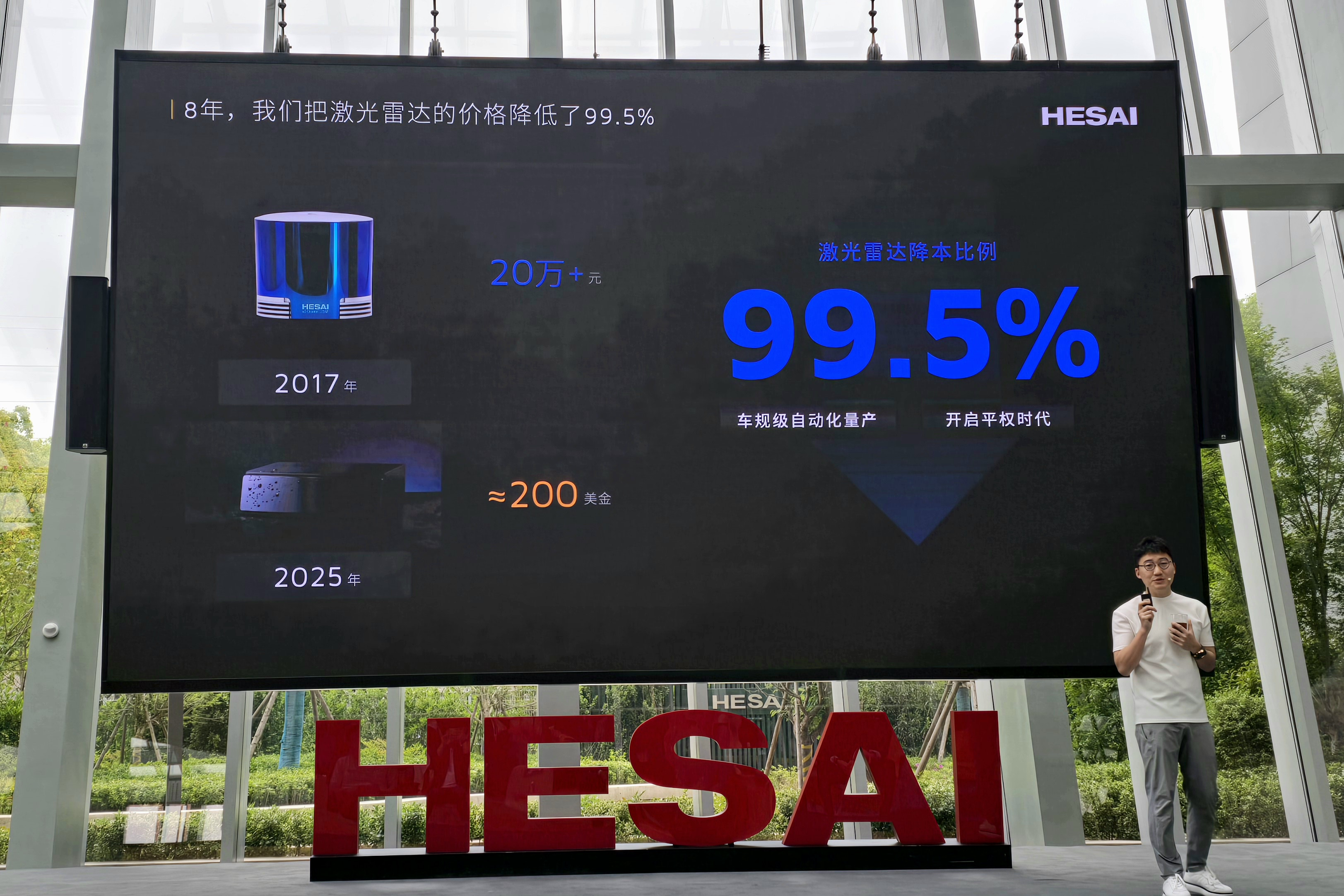
Meanwhile, LiDAR has also entered the mass consumer market. In 2023, 450,000 vehicles with LiDAR are on the road, and this will triple to 1.38 million by 2024.
In the 2024 new energy market priced over 150,000 RMB, LiDAR penetration reached 25%, and it is expected to reach 40% this year; across the entire new energy market in 2024, LiDAR penetration was 13%, and it is expected to reach 20% this year.

This year, leading automakers like BYD and CCAG are aggressively advancing auxiliary driving democratisation, which will quickly boost the LiDAR market. Hesai predicts that 3 to 3.5 million vehicles equipped with LiDAR will be on the road this year.
However, it’s not yet time to celebrate with champagne. While Hesai has turned profitable, many LiDAR companies are still operating at a loss. Even top performer Hesai Technology only achieved a net profit of over ten million dollars at a delivery scale of 500,000 units, highlighting that the LiDAR industry has yet to achieve a widespread positive cycle, and price competition appears to have started prematurely.
Today, Yifan Li also addressed the reality of high shipments but difficulty in profit-making: “I think this should be the norm, a true state of affairs. Frankly, when most customers are not yet making money, it’s very challenging, perhaps somewhat unrealistic, for us as suppliers to achieve significant profitability. To some degree, their cost pressure may be greater than ours.”
How to find growth in profitability? Yifan Li states that essentially, it boils down to two things: going overseas and expanding non-automotive business. He believes that internally, within China, competition is intense in terms of capability with no resulting increase in profit. “But when we take our Chinese supply chain capabilities, quality systems, and cost R&D iteration abilities overseas, you find that international clients see this competitive ability as a highlight. So it feels like our Chinese automotive industry resembles China’s national table tennis team.”
However, Li Yifan believes the biggest challenge in establishing a presence in overseas markets is that the success of Chinese suppliers in top-tier global competition is inherently rare, especially in the field of assisted driving. “The cost for overseas customers to make a choice is particularly high, with numerous challenges beyond language and cultural issues, involving many trust and communication problems.”
Collaborating with overseas car manufacturers isn’t easy. After rounds of technical validation, Hesai secured the largest overseas production order for front-mounted LiDAR, clinching an exclusive multi-year allocation from a top European OEM, covering multiple fuel and new energy vehicle models, with global deliveries set to begin in 2026.

Li Yifan stated, “Such collaboration wasn’t achieved by just attending a couple of meetings in Europe. We have a business team dedicated to this project year-round, even then it’s very challenging. To win over such a top-tier customer, our quality system must meet extremely stringent standards.”
How Does the “Qianliyan” See Far and Wide?
Originally intended to be named “Qianliyan,” the “Qianliyan” LiDAR perception solution launched by Hesai today was renamed to avoid the risk of false advertising, cleverly corresponding to the product’s positioning of “perception precision reaching centimeter-level.”
The “Qianliyan” includes three solutions: “Qianliyan A,” “Qianliyan B,” and “Qianliyan C,” providing different LiDAR combinations for L2 level assisted driving, L3 level conditional autonomous driving, and L4 and above autonomous driving systems.
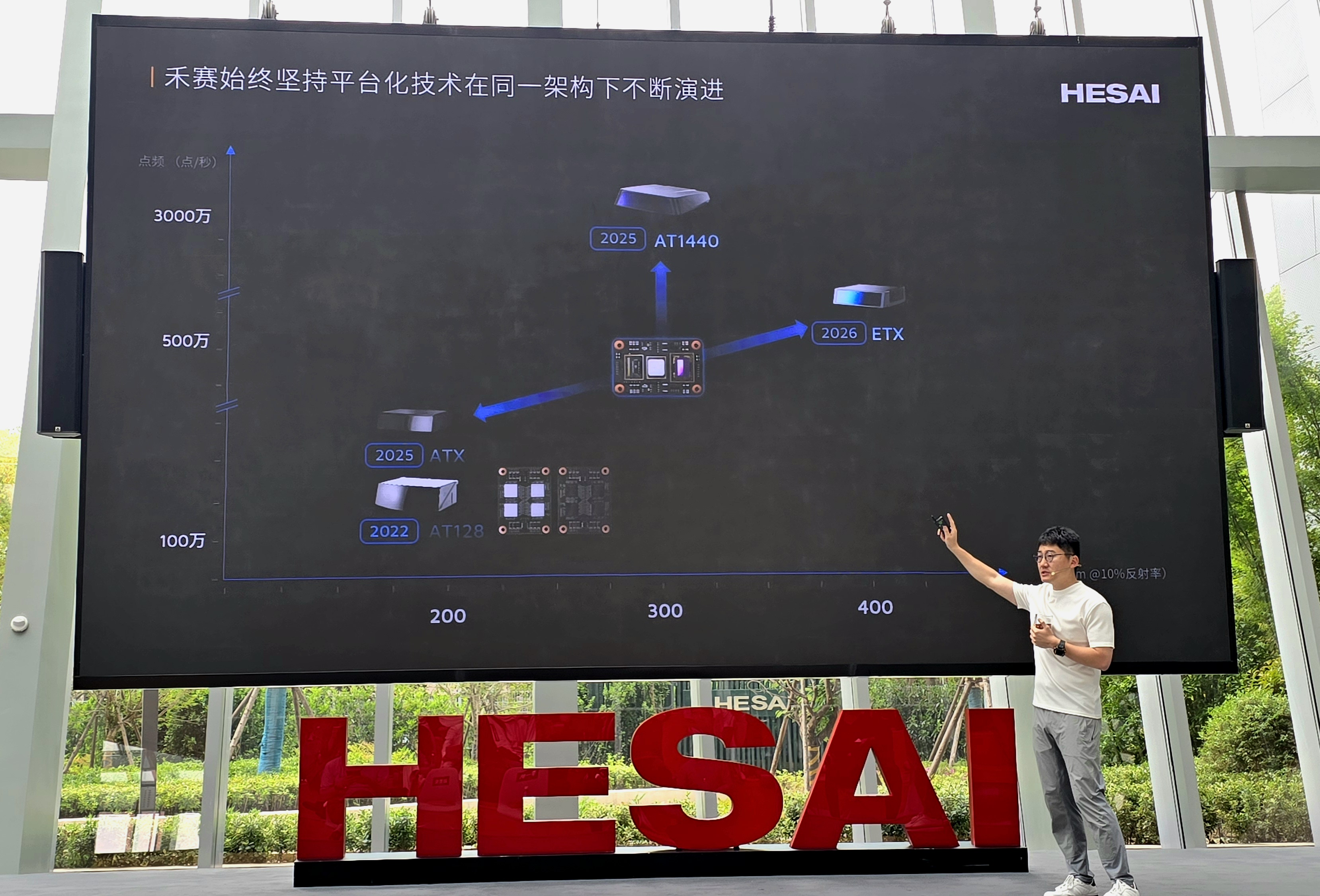
The hardware configurations of the three solutions differ, resulting in different functions, capabilities, and suited scenarios.
Hesai’s “Qianliyan C” solution for L2 focuses on lightweight and practicality, with its core product being the ATX LiDAR, an exceptionally compact yet high-performing long-range radar:
- Distance measuring capability of 200 meters @10% reflectivity, placing it at an excellent standard among mainstream L2 automotive radars.
- 256 channels with a minimum angular resolution of 0.1°×0.1°.
- Support for integration behind the vehicle body and windshield for flexibility and discreteness.
Additionally, the waveform decoding engine IPE equipped on the ATX has a 99.9% environmental noise filtering capability, meaning it can operate stably in environments with poor visibility such as backlighting, dim lighting, or rain and fog.
Currently, the ATX has secured allocation cooperation for dozens of models from 11 leading domestic car manufacturers, including BYD, Chery, Great Wall, and CCAG, with large-scale production started in the first quarter of 2025. By mid-April 2025, over 50,000 units have been delivered.
The “Qianliyan B” is a perception solution tailored for L3, utilizing a combination of a forward long-range main radar and two short-range radar for blind spot coverage.
- The main radar is the next-generation ETX, with a ranging capability of up to 400 meters @10% reflectivity. Officially, it is claimed to be the world’s longest-range automotive-grade LiDAR;
- The two supplementary blind spot radars are the latest FTX solid-state radars, featuring a super-wide field of view of 180°×140°, tasked with real-time monitoring of blind spots and the sides;
- These three radars collaborate to achieve precise identification ahead and dynamic perception at the rear sides.

Compared to the previous AT128, the ETX not only extends range but also enhances resolution by eight times, while the height of the radar window is reduced by 35%.
In L3 scenarios, which have extremely high safety margin requirements, this solution enables early detection of distant stationary vehicles and construction cones, as well as monitoring lane change risks and identifying vehicles rapidly approaching from the side.
Hesai has revealed that this combination has already been secured by a top European OEM, with mass vehicle integration expected to begin in 2026.
For L4, it’s not just about seeing the road clearly but comprehending the entire environment. In applications like Robotaxi and Robotruck, where tasks are completed without human intervention, higher demands are placed on the reliability, redundancy, resolution, and reaction speed of perception systems.
The “Qianliyan A” is Hesai’s perception solution aimed at L4 autonomous driving systems, featuring 4 ultra-high-definition AT1440s and 4 solid-state FTXs. This solution offers both long and short-range capabilities, with a full-field of view free of blind spots, and 360° coverage by high-performance LiDAR, enabling centimeter-level detection of small targets to meet the comprehensive high-definition perception needs of L4 autonomous applications like Robotaxi and Robotruck during high-speed operation.
The AT1440 is an automotive-grade ultra-high-definition LiDAR with an exceptionally high line count of 1,440, equipped with Hesai’s fourth-generation proprietary chip, offering a range of 300 meters @10% reflectivity. The AT1440 will begin mass production in the second half of this year, debuting on the world’s first future transport robot from KARP Dynamics and simultaneously featuring in the mass-produced KARP Dynamics L4 autonomous trucking convoy solution.

FTX is among the world’s broadest-view solid-state automotive-grade LiDARs, with a maximum super-wide field of view of 180°×140°, offering over twice the resolution of the previous generation, while reducing the exposed window area by 40%. It effectively covers blind spots around the vehicle and accurately detects low obstacles like bollards and pets, aiding in the precise implementation of automatic parking functions.Hesai’s recent release is not a singular product, but an entire suite of products and solutions. These three perception solutions span different levels from L2 to L4, demonstrating Hesai’s considerations in product modularity, performance gradation, and cost control. They also address a real-world question: How can lidar achieve the optimal balance between performance, cost, and integration?
Stepping Down From Vehicles
During today’s Hesai Open Day event, alongside the unveiling of the new generation lidar products, lidar’s application in the robotics field was also a major focus. Hesai showcased collaborative achievements with various robotics companies and organized a dedicated roundtable discussion in the robotics field to explore how robots can perceive the world and be applied amidst the wave of AI and automation.
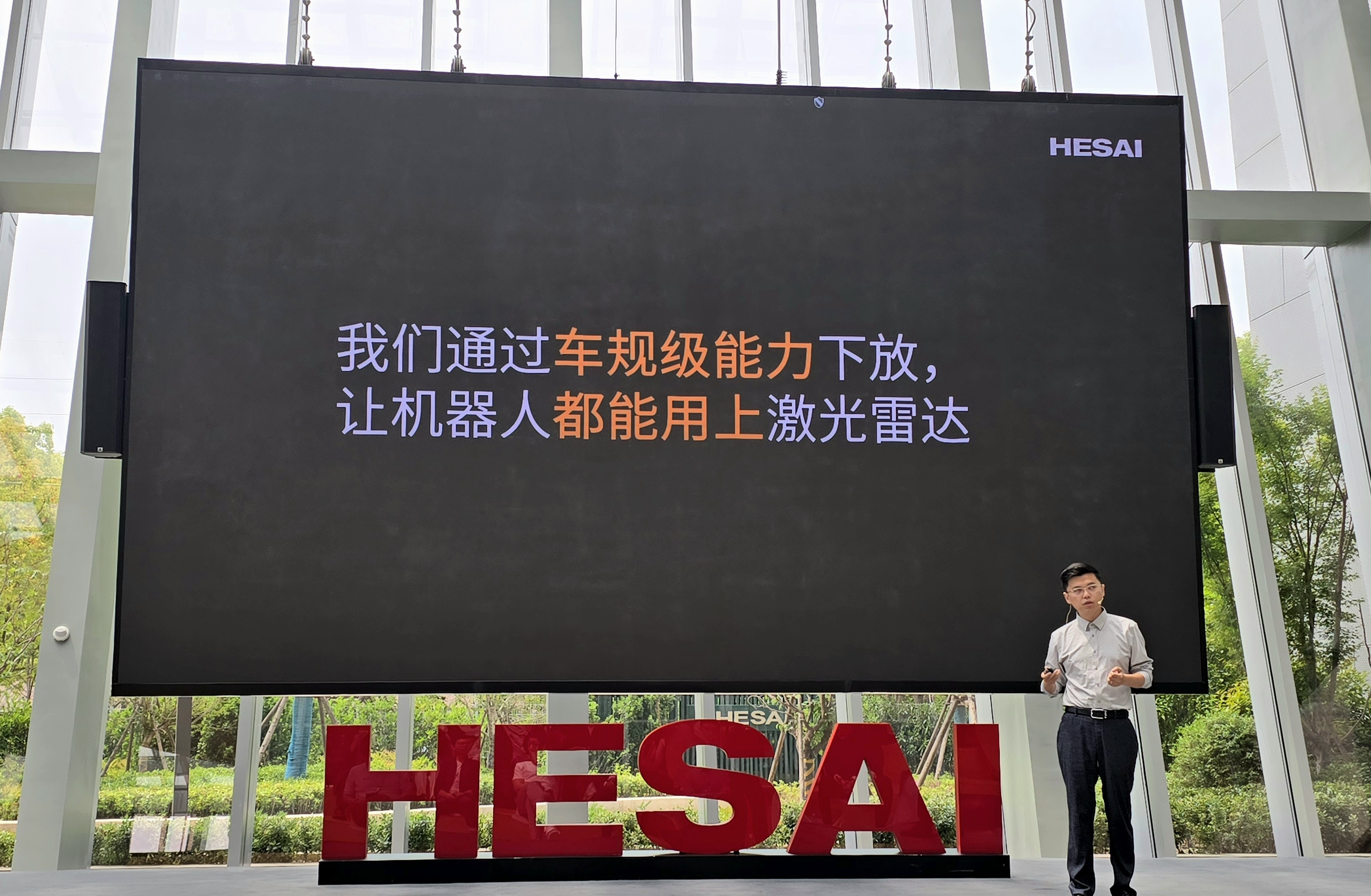
Hesai’s exploration in the robotics field was initially low-key, but has now gained considerable scale. According to official data, by December last year, Hesai supplied 20,000 lidars to the robotics market. By the end of 2024, Hesai lidars are widely applied in mobile robots, delivery robots, cleaning robots, lawn-mowing robots, and many other areas, establishing partnerships with more than 1,700 robotics companies globally, including Dreame lawn-mowing robots, Nuwa Technologies, Qunhe Technology, VataPower, and Unitree Robotics.
In the coming year, Hesai has received orders for 300,000 units from Dreame. In addition, Hesai currently holds an 80% market share in the global general mapping market, with 4 out of every 5 mapping devices equipped with Hesai lidar.
“We are delegating automotive-grade capabilities to ensure robots can use lidar,” noted Liu Xingwei, VP of Hesai’s robotics perception business: 3D lidar is the best sensor for robot mobility, and the potential for lidar in the robotics industry far surpasses ADAS.
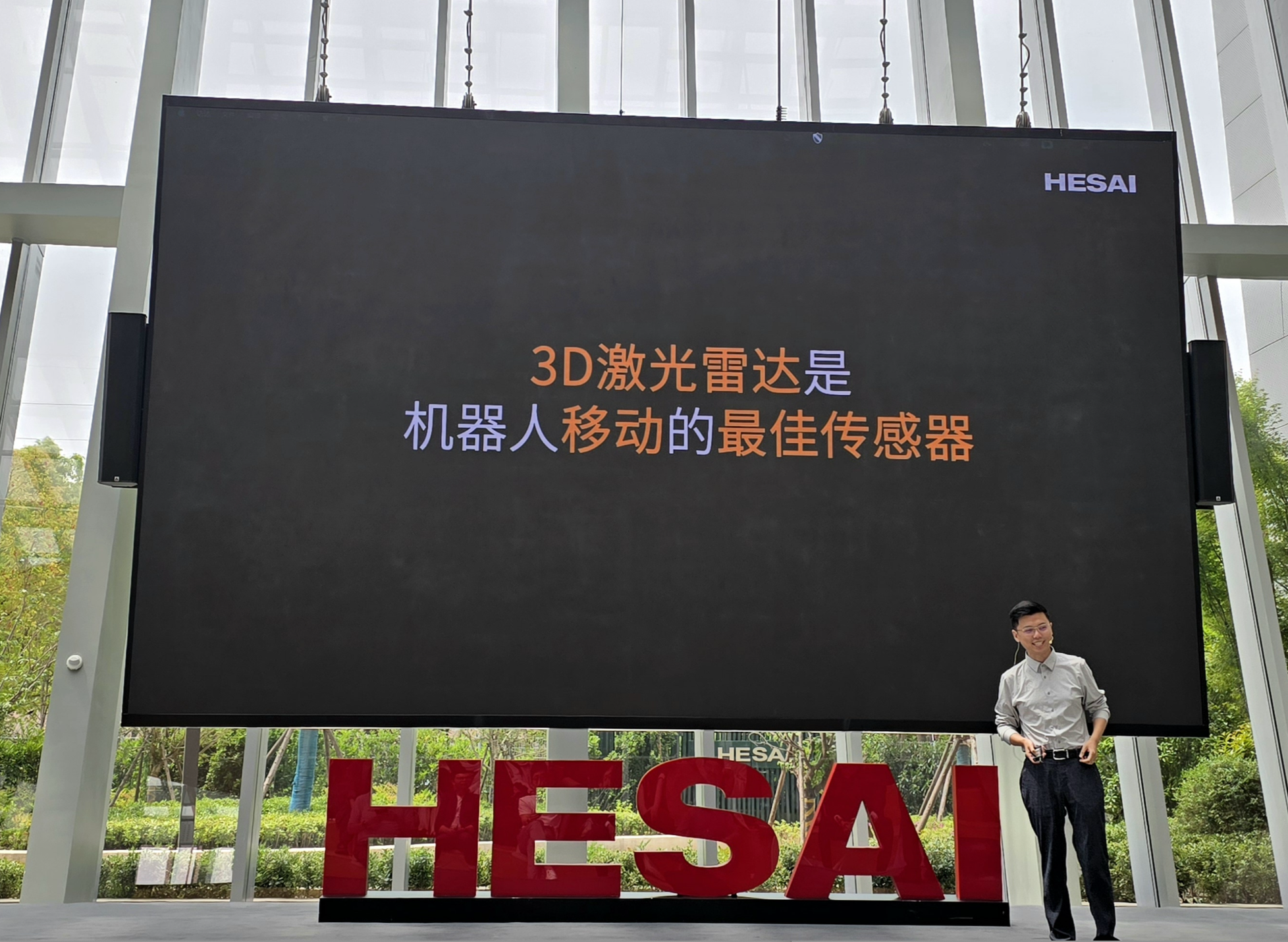
Liu Xingwei further mentioned that by 2025, Hesai is expected to deliver 200,000 robot-specific lidars. By 2029, the robot lidar market could exceed 10 billion yuan. “Meanwhile, we believe the future of robot lidar has endless scope for response. The robotics industry is indeed a favorable situation because it encompasses an infinite number of scenarios. Hence, you will invariably find that after solving one scenario or one demand, a new demand will emerge.”
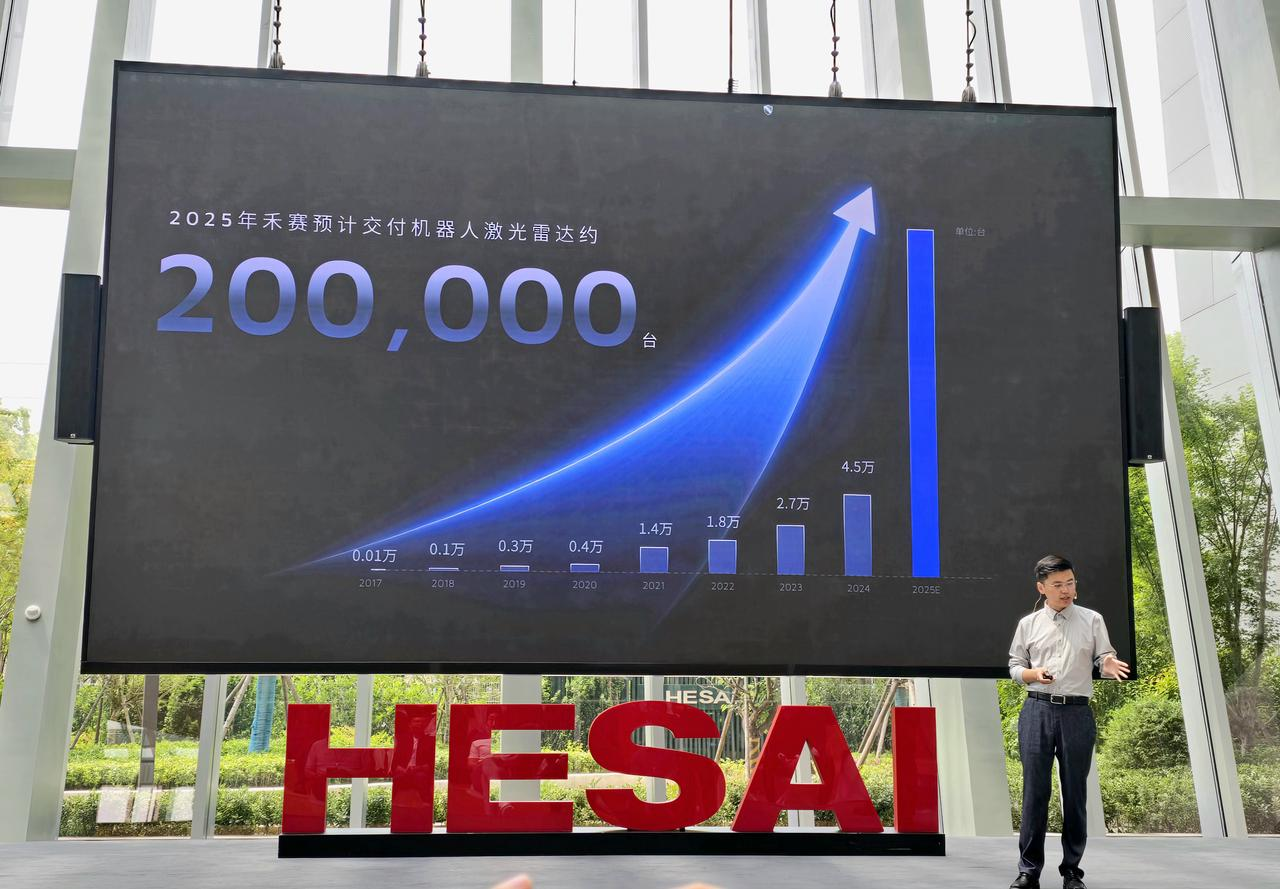 In the roundtable session, several participating guests highlighted the diversity and complexity of robot application scenarios during their discussion.
In the roundtable session, several participating guests highlighted the diversity and complexity of robot application scenarios during their discussion.
Yifan Li emphasized the importance of simplification: “I see a great opportunity in doing one small thing well. It’s more meaningful to achieve 100% on one task than to reach 99% on many tasks. As long as it’s not 100%, you have to keep an eye on it.”
Qin Ling, CTO of Cotino Technology, shared their hands-on experience with lawn mowing robots. He stated that Cotino’s approach to mowers is a project starting from actual user resonance. Before Cotino entered the lawn mower industry, traditional mowers were complex to install, had chaotic navigation planning, and limited environmental perception. “We handed these issues to the robots to solve, which aligns with our pursuit of providing the innovation users need.”
Zhelun Zhao, co-founder of Viptalize, categorized service robots into indoor operational and outdoor mobile types. The former requires high precision in hand movements, while the latter demands greater environmental perception and route planning. Based on this classification, Viptalize currently offers two products, one for indoor and one for outdoor use, with plans to release an intelligent companion robot for outdoor settings by the end of the year.
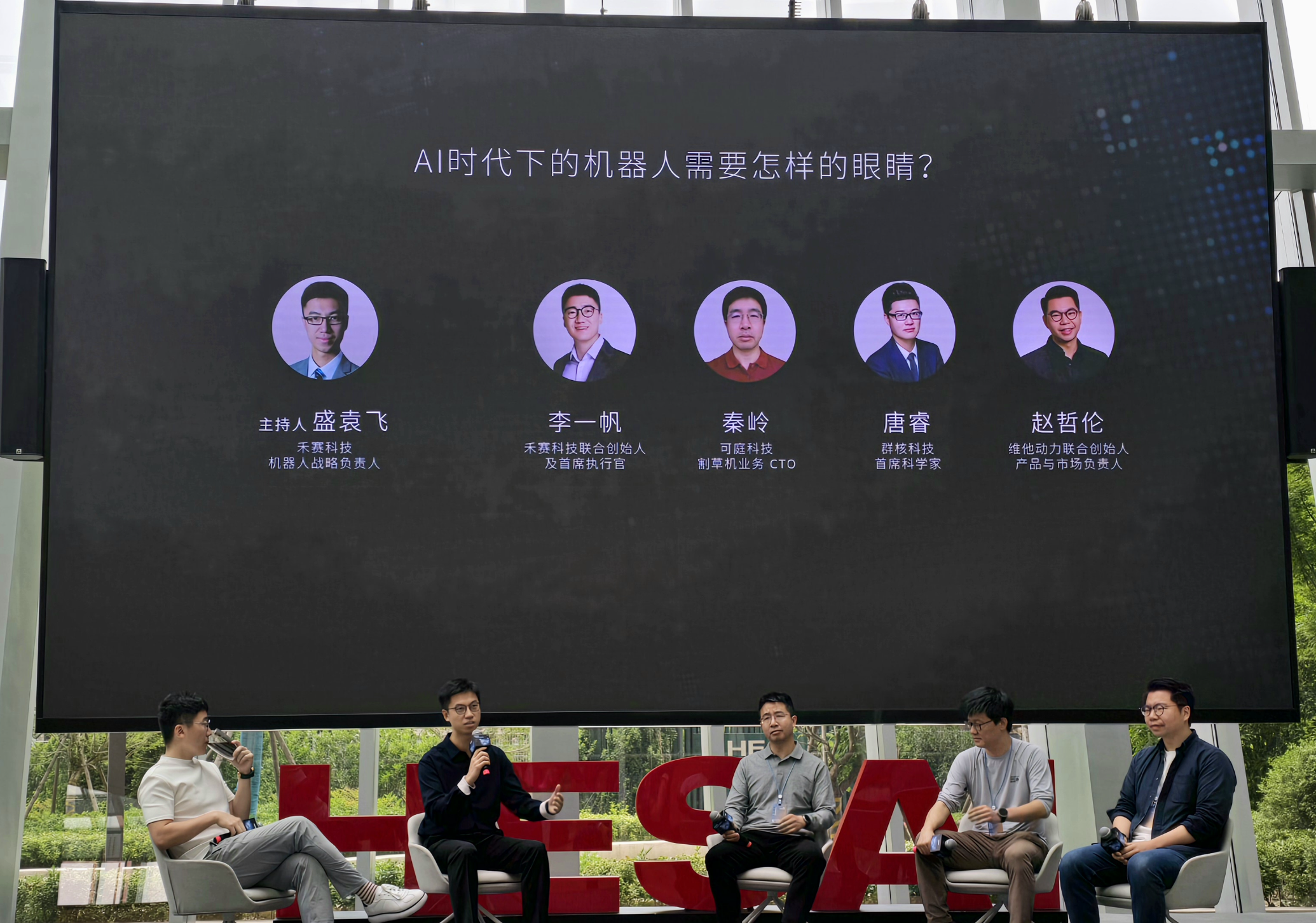
This roundtable didn’t deliberately align opinions but instead highlighted three divergences the robotics industry currently faces: first, the choice of technological solutions, where LiDAR is not a panacea; second, the balance between application scenario breadth and precision, with some companies favoring mass production efficiency while others pursue ultimate precision; and third, the rising demand for robots’ “world understanding ability,” evolving from basic perception to system cognition.
For Hesai, the robotics sector is clearly not a substitute but a piece of the puzzle that’s charting a second growth curve. As the traditional automotive market approaches intense competition, the new blue ocean of robotics might provide LiDAR with an outlet that’s less fiercely competitive but offers more expansion potential.
As intelligent vehicles enter a slowdown phase, it might just be the moment for robots to take their silent run.
This article is a translation by AI of a Chinese report from 42HOW. If you have any questions about it, please email bd@42how.com.
